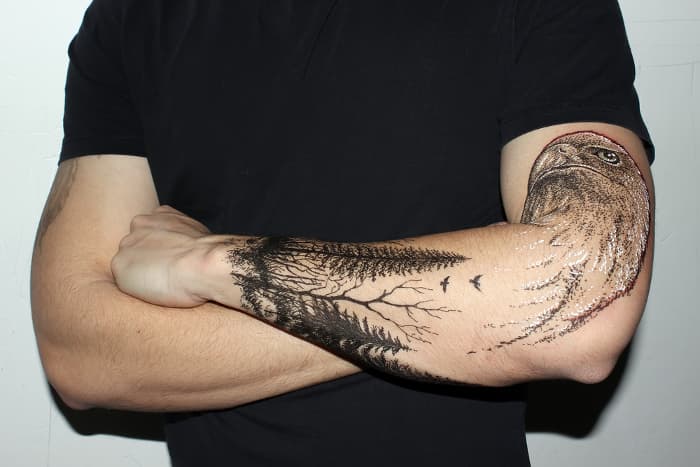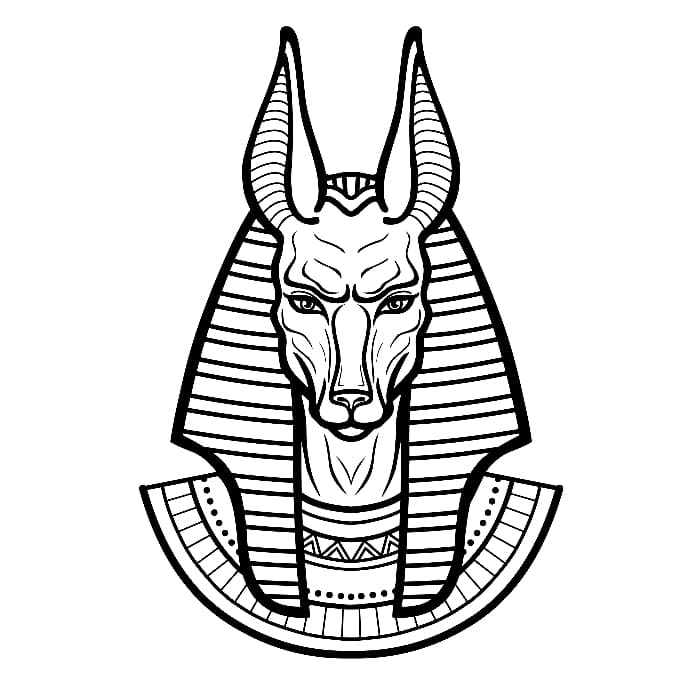Tiger tattoos have been a popular choice among tattoo enthusiasts for their powerful symbolism and striking appearance. These majestic creatures have long been admired for their strength, courage, and beauty, making them an appealing subject for body art. Throughout history and across cultures, tigers have held various meanings and have been incorporated into a variety of tattoo designs, each with its own unique interpretation and significance.

In addition to their historical and cultural significance, tiger tattoos also embody a range of powerful symbolic meanings. In Japanese-style tattoos, tigers are linked to courage, longevity, and strength, and are thought to ward off bad luck, evil, and illness. These tattoos can portray the tiger in a variety of styles, making it a versatile and deeply meaningful design choice for individuals looking to express themselves through body art. Different colors and elements may be incorporated to further personalize the design, adding depth to the symbolism and visual appeal.
Key Takeaways
- Tiger tattoos are popular due to their powerful symbolism and striking appearance
- These designs can convey courage, strength, and protection against negativity
- Personalization options include various styles, colors, and additional elements
Historical and Cultural Significance
Tiger Symbolism in Asian Cultures
The tiger holds a special place in various Asian cultures, representing both feared and respected qualities. In India, the tiger is often associated with the Hindu goddess Durga, symbolizing fierceness and feminine power. Similarly, in Korea and Japan, the tiger is linked to courage, longevity, and strength.
Chinese Zodiac and the Tiger
In Chinese culture, the tiger is one of the twelve animals of the Chinese Zodiac. It represents bravery, competitiveness, and unpredictability. People born in the Year of the Tiger are thought to possess these traits, making them natural leaders who are respected and admired. Tigers also serve as a symbol of protection in Chinese culture, warding off evil spirits and bad luck.
Japanese Tiger Tattoo
In Japanese tattoo art, the tiger is an important symbol representing various qualities. Known as “Tora,” the Japanese tiger tattoo is thought to provide protection from illness, evil, and bad luck. This ferocious creature is also linked to courage, longevity, and strength, symbolizing the North of Japan. Japanese tiger tattoos often feature different colors, depicting the beauty of autumn in their design. The art form is heavily influenced by traditional Japanese painting styles, creating an iconic and powerful image that transcends cultural boundaries.
Symbolism in Tiger Tattoos
Tiger tattoos are rich in symbolism, carrying various meanings that may hold personal significance for the individual wearing them. In this section, we will cover some of the most common themes and look into their associated meanings.
Strength and Ferocity
Tigers are known for their incredible strength and power. As such, a tiger tattoo often represents these qualities, symbolizing a person’s ability to overcome adversity and face challenges head-on. The fierceness of the tiger’s image also reflects determination, independence, and bravery.
Protection and Courage
In addition to strength, tiger tattoos are often associated with protection and courage. It is believed that the fierce image of the tiger can ward off bad luck, evil, and illness. People who have faced particularly challenging situations in their lives might choose a tiger tattoo to express their courage and resilience in the face of adversity.
Balance and Harmony
Tigers can also represent balance and harmony in one’s life. In Japanese culture, the tiger is close to the earth, symbolizing the yin or the more passive and receptive aspects of life. By transcending opposing forces, a tiger tattoo can allude to spiritual growth and a person’s pursuit of enlightenment.
Love and Passion
The tiger shares a connection with love and passion, its bold and fierce nature reflecting the intense emotions involved in romantic relationships. A tiger tattoo may symbolize the flaming passion one has towards their partner, as well as the deep and enduring love they share.
Nobility and Royalty
Lastly, tiger tattoos can represent nobility and royalty. In many cultures, the tiger has been a symbol of prestige, prosperity, and wealth. Those who choose to bear the tiger’s image may wish to convey their pride, respect, and the sense of nobility associated with this majestic creature.
Distinct Tiger Tattoo Designs
Traditional Style Tiger Tattoos
Traditional tiger tattoos often feature bold lines, limited but striking colors, and subtle shading. These tattoos typically use red, green, yellow, and blue to create a vibrant, rebellious feel. The traditional style of tiger tattoos has been favored by those on the fringes of society, making it a well-known symbol of counterculture.
Japanese Tiger Tattoos
Japanese tiger tattoos are deeply rooted in the culture and history of Japan. These tattoos often represent strength, courage, and protection, with the tiger being seen as both a fearsome predator and a guardian spirit. The designs feature intricate details and a mix of colors, with the tiger often surrounded by other symbolic elements such as flowers, waves, or Japanese characters.
Chinese Tiger Tattoos
Chinese tiger tattoos carry a rich symbolism in Chinese culture, often representing power, authority, and good luck. These tattoos usually feature vibrant colors and striking details such as the tiger’s face or claws. In some designs, the tiger might be depicted with Chinese characters or other cultural symbols, highlighting the connection to Chinese beliefs and traditions.
Tribal Tiger Tattoos
Tribal tiger tattoos are inspired by the tribal art styles of various indigenous cultures, using bold lines, geometric shapes, and intricate details to create a unique and eye-catching design. These tattoos often showcase the tiger’s fierce nature, strength, and ferocity while incorporating cultural patterns from different tribes.
Modern and Geometric Style Tiger Tattoos
Modern and geometric style tiger tattoos combine the traditional symbol of the tiger with abstract shapes and lines, creating a sleek, contemporary look. These tattoos often emphasize the tiger’s features, such as its eyes and stripes, while incorporating geometric patterns and minimalistic color palettes. This style can appeal to those who appreciate the tiger’s symbolism but prefer a more modern, artistic approach to their tattoo design.
Color and Spirit of Tiger Tattoos
Tiger tattoos are eye-catching and powerful symbols in body art. The different colors of these majestic animals often convey different spiritual and emotional meanings. In this section, we’ll explore the symbolism behind white, blue, red, and yellow tiger tattoos.
White Tiger Tattoos
The white tiger is a rare and enigmatic creature in the wild. In tattoos, a white tiger often represents purity, beauty, and focus. In Eastern cultures, the white tiger is believed to offer protection and spiritual guidance, warding off bad luck and evil. White tiger tattoos can be a bold and captivating choice for those seeking to symbolize these qualities in their body art.
Blue Tiger Tattoos
Blue tiger tattoos are not based on an actual wild tiger coloration but rather the artistic and symbolic choice of the wearer. The blue color in a tiger tattoo can represent calmness, tranquility, and wisdom. A blue tiger tattoo might be the perfect choice for someone who values these traits and wants a unique take on the powerful image of a tiger.
Red Tiger Tattoos
A red tiger tattoo implies a more aggressive and fiery symbolism. The color red is often associated with passion, power, and determination. A red tiger tattoo can signify the wearer’s inner strength and unwavering resolve. This bold choice in body art can serve as a reminder of one’s ability to overcome challenges and adversity.
Yellow Tiger Tattoos
A yellow tiger tattoo is a striking and colorful option that can symbolize happiness, energy, and optimism. Yellow is a bright, cheerful color that can bring warmth and light to a tattoo design. A yellow tiger might be considered a symbol of both the fierce power of the tiger and the vibrant, positive energy that the wearer embraces in their life.
Incorporating Additional Elements
Floral Motifs
Incorporating floral motifs into tiger tattoo designs can enhance the symbolism and make the tattoo more visually appealing. Popular flowers in tiger tattoo designs include cherry blossoms, which represent beauty and the fleeting nature of life. Adding flowers to a tiger tattoo can symbolize wisdom and care, as well as add a touch of vibrant color to the design.
Celestial Symbols
Celestial symbols like the sun, stars, and clouds, can be combined with tiger designs to add a spiritual and powerful vibe to the tattoo. For example, a solar-themed tiger tattoo may represent strength and courage; while a Blue Tiger tattoo, inspired by the myth, represents control of the earth elements and spring season. Including celestial symbols can also be a memorial to loved ones, representing their guidance and presence from above.
Fearsome or Gentle Companions
Tiger tattoos can feature the animals in various forms, such as a fierce adult tiger, a gentle white tiger, or a playful tiger cub. Mixing these variations with elements like flowers can create a tattoo that symbolizes the wearers’ bravery and independence in different situations. For instance, a baby tiger tattoo can showcase the playful side and evoke the innocence of the wearer, while a fearsome tiger symbolizes power and fierce protection.
Eye of the Tiger
The phrase “eye of the tiger” is often associated with unwavering determination and the will to overcome challenges. Incorporating this into a tattoo design can serve as a powerful reminder of one’s resilience and strength. By combining the eye of the tiger with other elements such as clouds or cherry blossom, the tattoo can provide a meaning encompassing courage, longevity, and the ability to persevere through tough times.
Choosing the Right Artist and Location
Selecting a Professional Tattoo Artist
When deciding to get a tiger tattoo, it’s crucial to choose a professional and skilled tattoo artist. This is essential not only for the quality of the final artwork but also for your safety and satisfaction. Here are a few tips to help you select an artist:
- Research: Look for tattoo artists who specialize in the style you desire (realism, traditional, etc.). Browse their portfolios, read client testimonials, and don’t be afraid to ask around for recommendations.
- Studio inspection: Make sure the artist’s studio is clean and follows all necessary health and safety regulations. They should typically use disposable gloves, sterilized equipment, and clean work surfaces.
- Cost: Keep in mind that experienced artists may charge more for their work, but investing a little extra can be worth it for a long-lasting, high-quality tattoo.
- Communication: Effective communication between you and the tattoo artist is critical. Ensure you feel comfortable discussing your ideas and that the artist is open and receptive to your needs.
Deciding on Tattoo Placement
The placement of your tiger tattoo can significantly impact the overall design, aesthetic, and meaning. Moreover, different locations on the body may carry specific connotations or symbolism, so it’s essential to choose wisely. To help you decide on the perfect tattoo placement, consider the following factors:
- Visibility: Think about whether you want your tattoo to be easily seen or concealed for professional or personal reasons. Some popular visible locations include the arms, legs, and neck, while hidden spots may include the upper back, torso, and thighs.
- Size and complexity: The location you pick should accommodate the size and complexity of your tattoo design. Larger, more intricate designs may require more space, such as the back, chest, or upper arm, while smaller, simpler designs can work on areas like the wrist or ankle.
- Pain tolerance: Some parts of the body, such as the ribs, feet, or hands, can be more painful to tattoo due to the proximity of bones and sensitive nerves. Keep your pain tolerance in mind when choosing a location.
- Personal significance: For a meaningful tiger tattoo, the placement could hold personal significance, such as a location related to your cultural heritage, an area on your body you feel most confident about, or a spot that represents an aspect of your life story.
By carefully selecting a professional tattoo artist and considering the ideal placement for your tiger tattoo, you can ensure a beautiful, lasting piece of body art that embodies the symbolism and meaning you desire.



